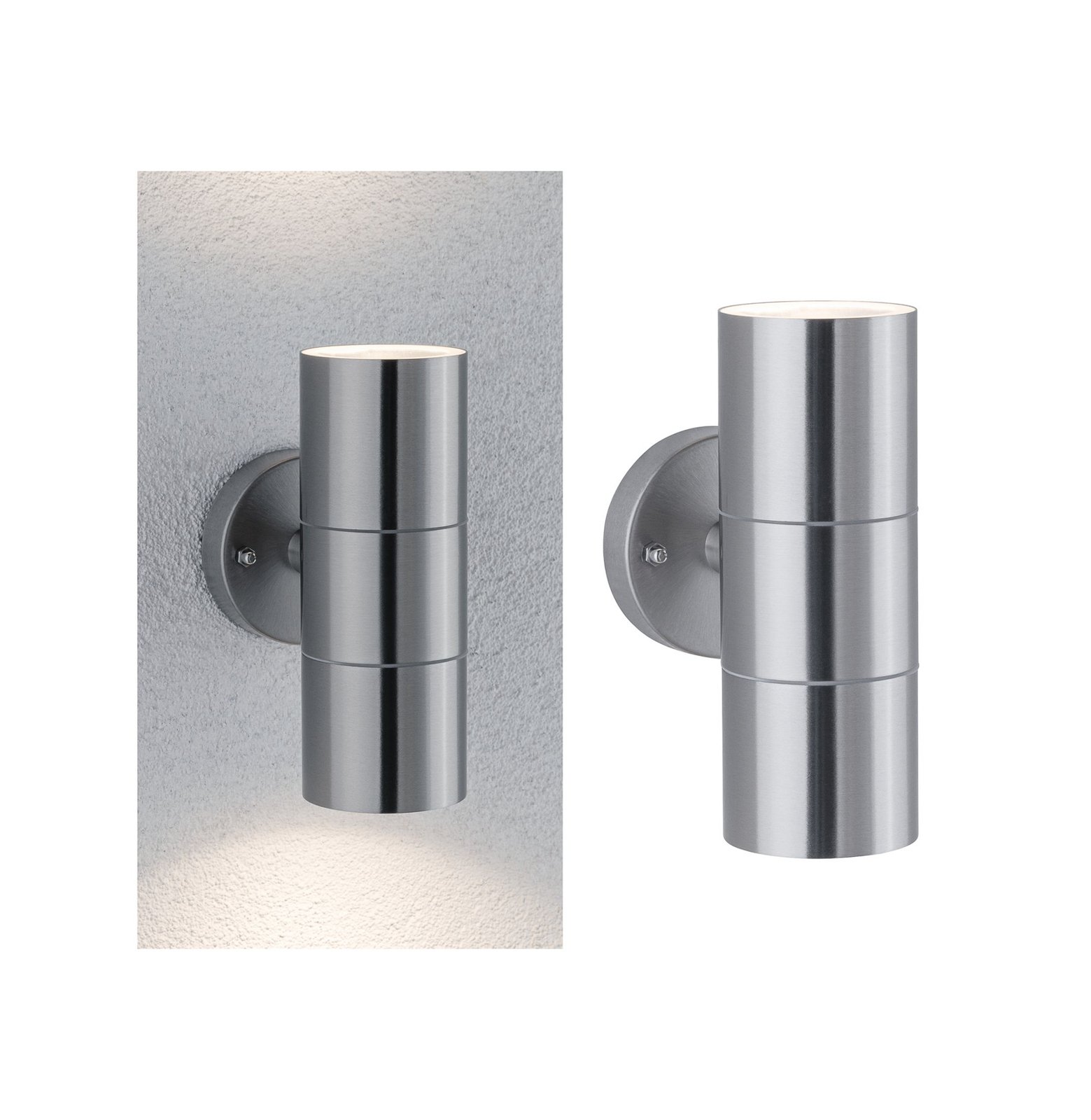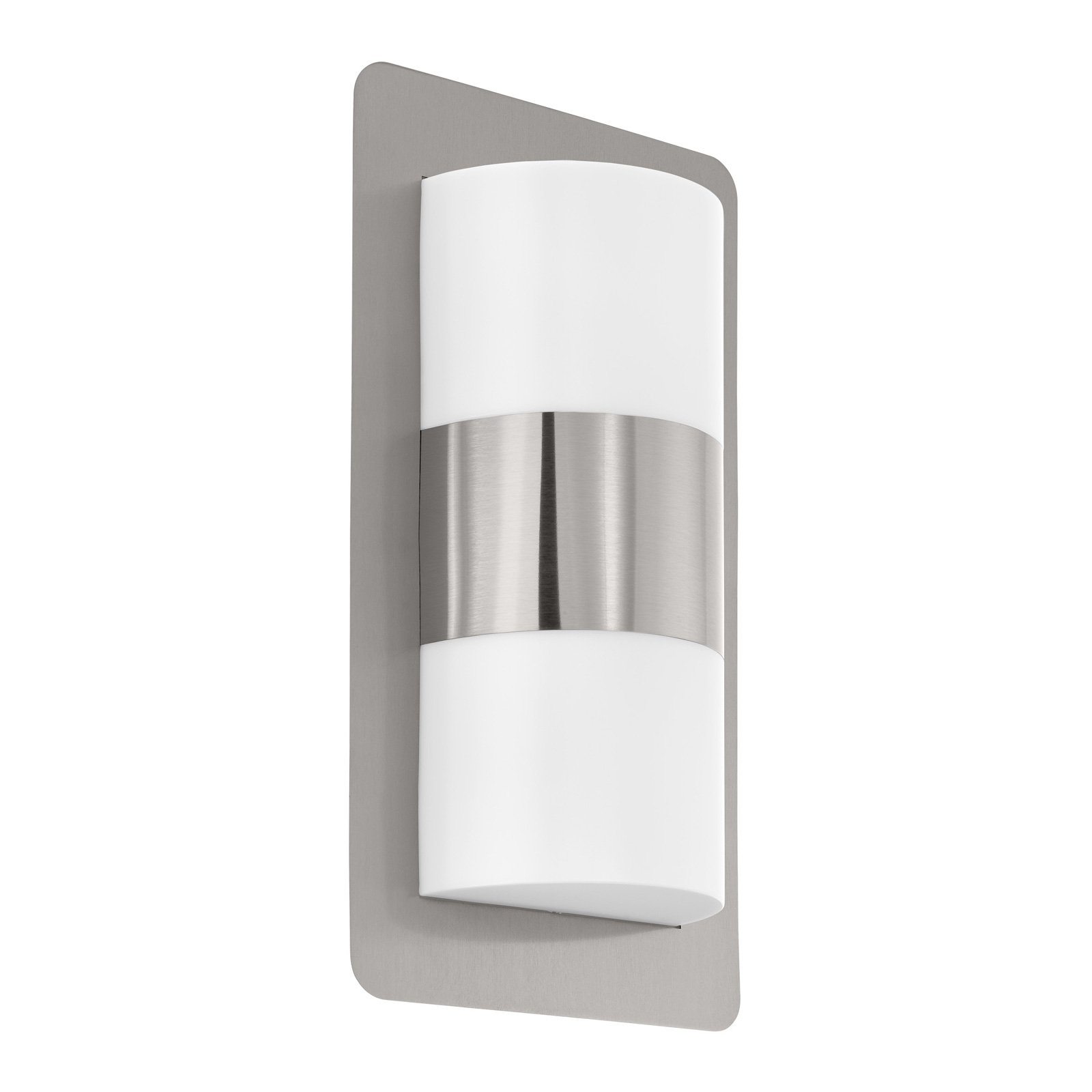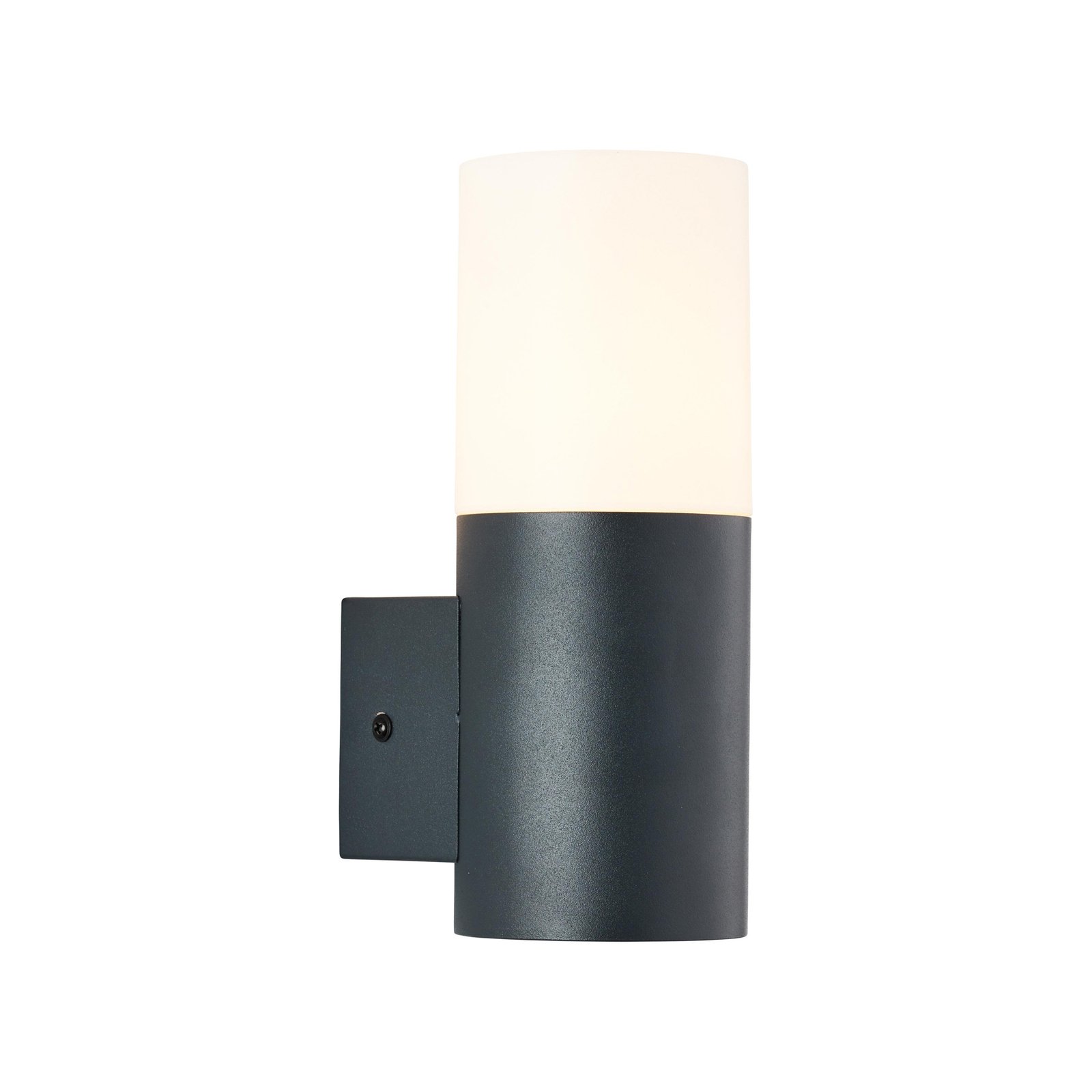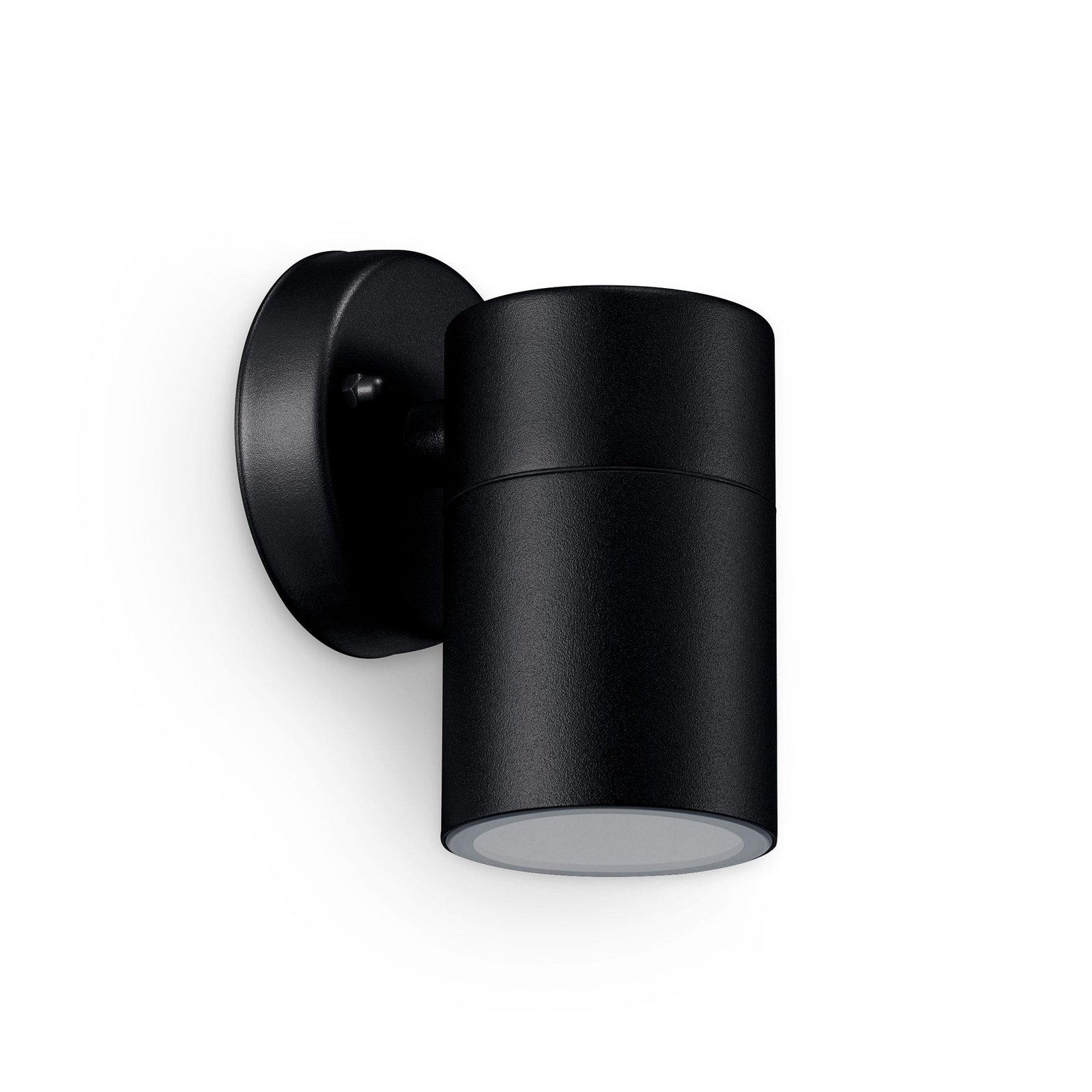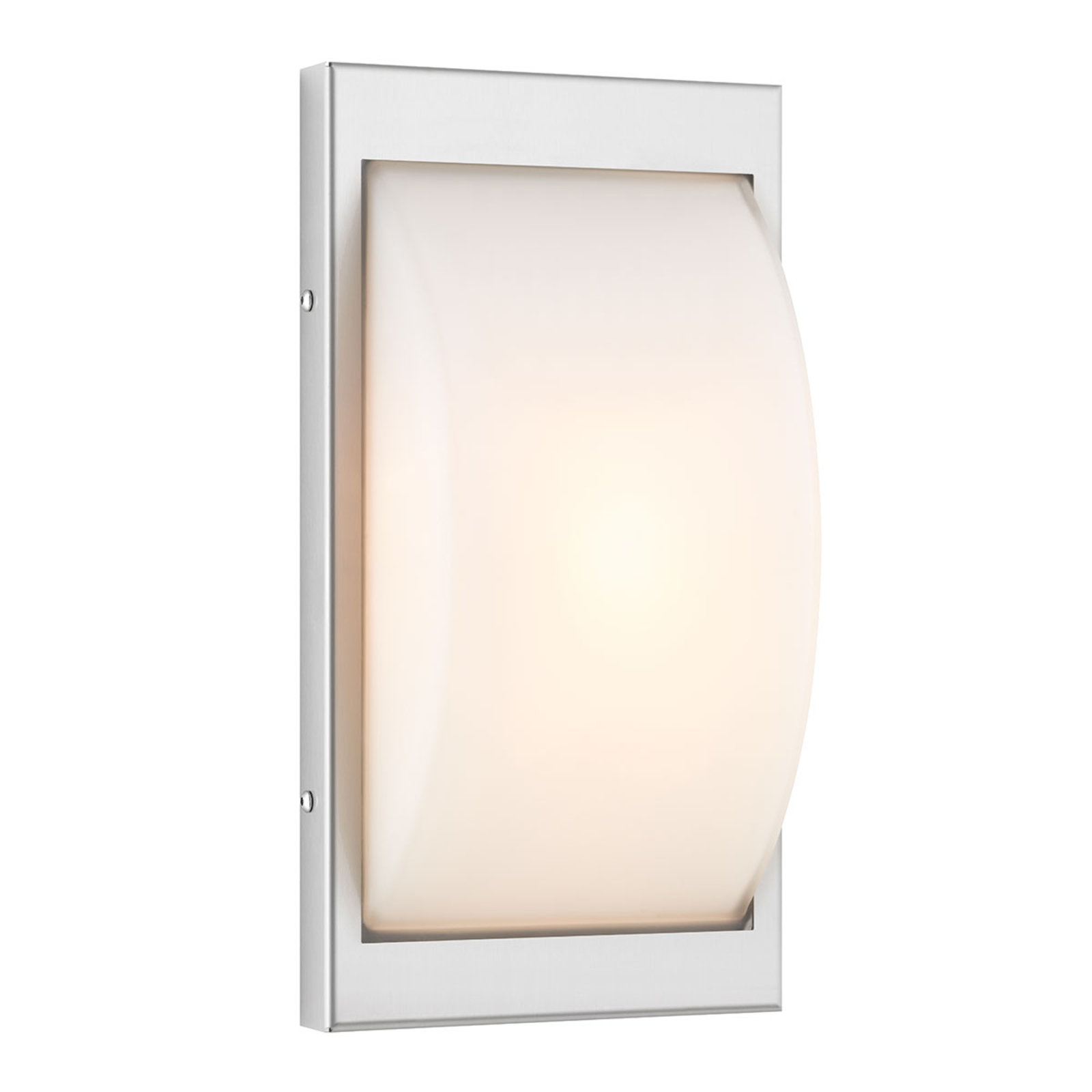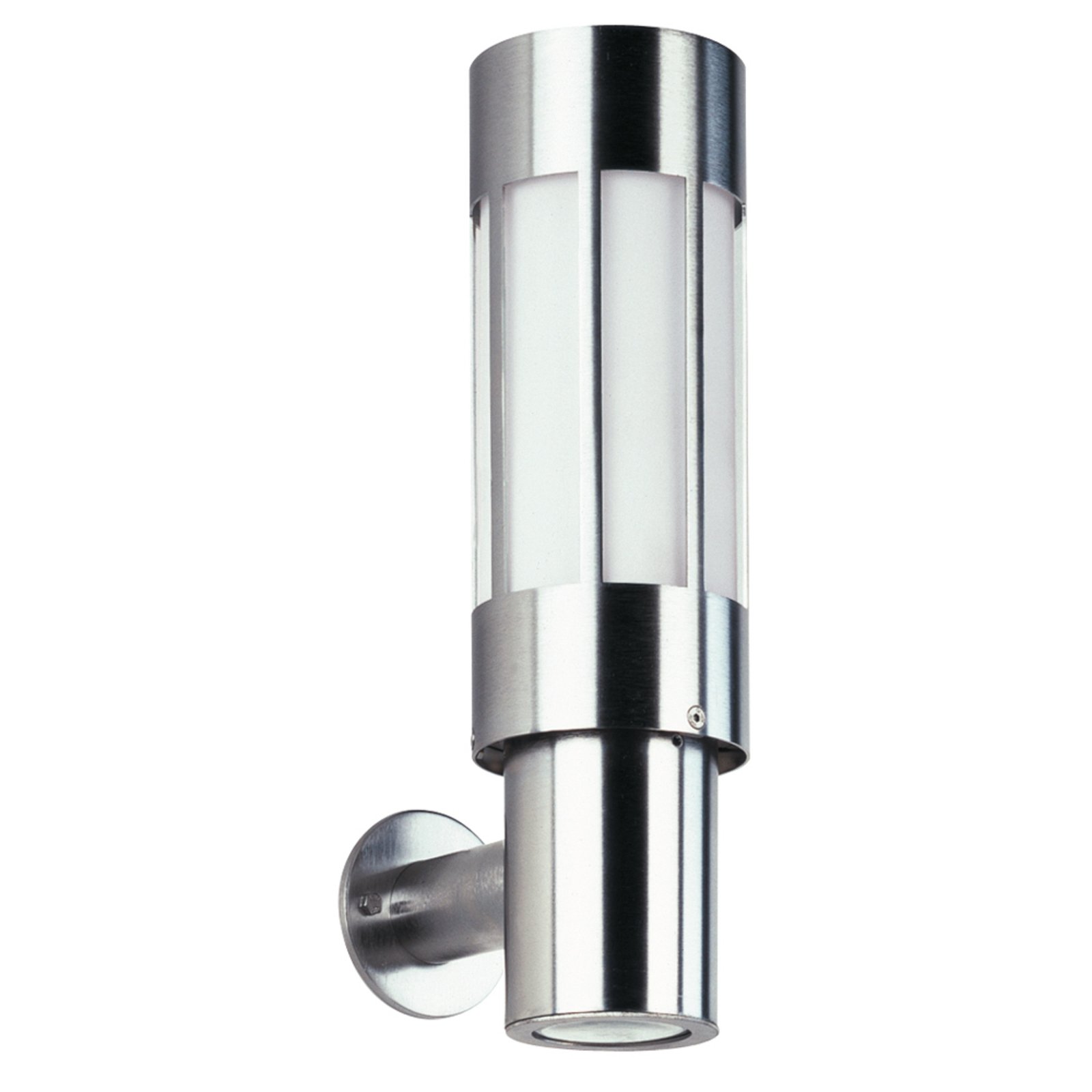- 50 days free returns
- Rated “Great” on Trustpilot
- The UK's largest selection of brands
Extra 10% off over £89 & Extra 13% off over £129
Stainless steel wall lights: Outdoor stars thanks to robust material
Outdoor wall lights don't have it easy!
Rain and hail pelt down on the housing, in summer the sun beats down and in winter it has to withstand sub-zero temperatures in the double-digit range. And unless you're talking about solar lights, where blazing sun is the best thing there is, all environmental conditions will damage the lights.
With ...
- a professional operation,
- regular cleaning,
- the suitable choice of location
- and the selection of the correct IP protection class
... you can already increase the lifespan of your outdoor lights a little.
However, the material from which the light is made also determines its durability. And no matter who you ask, everyone agrees that stainless steel wall lights are a good choice.
What are the advantages of stainless steel outdoor lights?
One fact first: wall lights with polycarbonate or glass shades can also be extremely high-quality and durable. As long as you don't opt for particularly cheap products from the junk table, you will generally enjoy your outdoor lights for a long time. However, stainless steel wall lights have a number of advantages that make them particularly attractive to the majority of users:
- Stainless steel looks good. Always and everywhere.
- Stainless steel is less susceptible to corrosion.
- Stainless steel is stable.
- Stainless steel is temperature resistant.
- Stainless steel is easy to clean.
But stainless steel alone is not enough to guarantee high quality. In fact, stainless steel is available in different grades.
You can help yourself by buying high-quality products. Branded products from STEINEL or PHILIPS are a good choice. And of course we also have many products in our own brand Lights.co.uk that are tailored to outdoor requirements and customer needs.
What features are available for stainless steel wall lights for outdoor use?
Whether for the garage entrance, the house entrance or the narrow alleyway: There are numerous possible applications for stainless steel outdoor wall lights. Accordingly, their equipment is also very different. Some important criteria to help you make your choice:
Stainless steel wall lights with LED
Are the best lighting solution without alternative. They save 90% energy** compared to incandescent lamps, are very switch-proof and last up to 50,000 hours** in operation. This makes them the first choice for many (if not all) outdoor applications.
LED outdoor lights with motion detector made of stainless steel
Actually make sense everywhere where lighting is used practically. Motion detectors utilise lighting economically, i.e. when you need it. This saves energy and protects the light sources.
But: Do not use energy-saving lamps. They have a start-up time until they reach maximum brightness. They are therefore not suitable for immediate light on demand! LEDs, on the other hand, offer instant 100% brightness (just like incandescent lamps and halogen lamps). This makes them just as suitable for entrance lighting as they are for burglary protection, for example.
Stainless steel wall lights with double-sided light outlet
A luminaire that emits beams of light upwards and downwards often also serves staging purposes. Because you should be aware that reflective surfaces do not count for much outdoors. So if the light travels upwards along the wall of the house, it looks great - but you won't have a brightness advantage on the path.
Use stainless steel wall luminaires with double-sided light outlets to showcase your façade. But you should do this without a motion detector. Because the façade naturally comes into its own when the light is on all the time. Here too, LED lighting technology helps you save electricity.
How and how high should outdoor lights be mounted on the wall?
Stainless steel wall lights require a power connection on the façade if they do not work with solar energy. The installation itself should ideally be carried out by a qualified electrician**. You will also find instructions on how to assemble your specific light in your Lampenwelt pack.
However, you can be clear about where your wall light is best placed before installation. This also includes how high the wall light should be mounted. This can rarely be expressed in figures, as every property (and those who enter it) are slightly different, but there are a few guidelines that can be used as a guide:
Wall lights should not dazzle
This is perhaps the most important installation tip both indoors and outdoors. If the wall light in the house entrance is dazzling and you look away rather than towards it, the light has failed to fulfil its purpose. Because if you can't see your surroundings properly (because you're blinded), it's easy to step over, miss steps or even just knock over a flower pot.
This can be avoided by mounting the luminaire about 5 cm above eye level, i.e. no lower than 1.70 m to 1.80 m. Of course, it also depends on the light fall of the luminaire (whether it shines towards you) or whether it has a glare-inhibiting diffuser, e.g. made of polycarbonate.
You shouldn't get stuck on wall lights
Of course, you shouldn't get your woollen jumper caught on a corner of the light housing or bump into it with a full bag. If it doesn't harm you, it might harm the luminaire. Both can be avoided. The easiest way to do this is to position luminaires higher.
But especially in narrow aisles, overhanging luminaires can further restrict the already limited space available. It is also advisable to use a light with a small projection or depth.
You will of course find the projection/depth information for each product in the product details at Lights.co.uk .
The strike-through prices correspond to the manufacturer's RRP.
All prices include 20% VAT, delivery costs excluded.


















































































